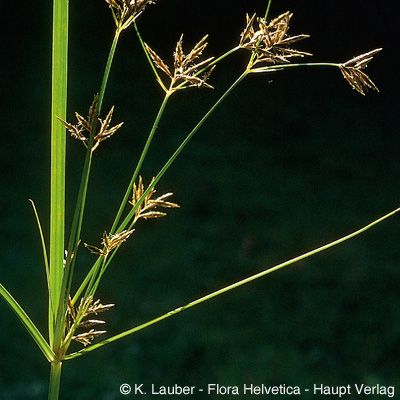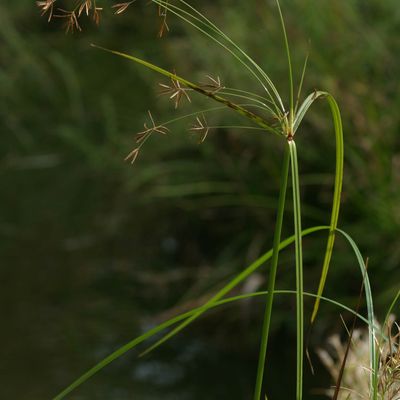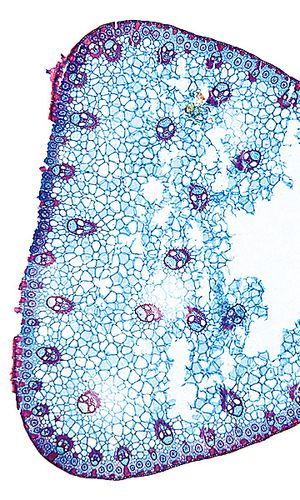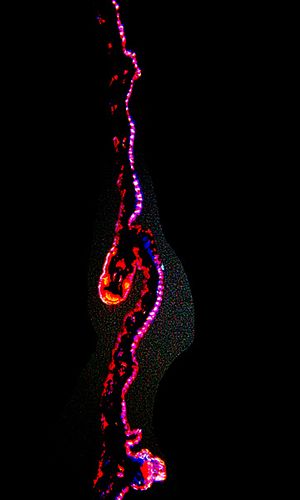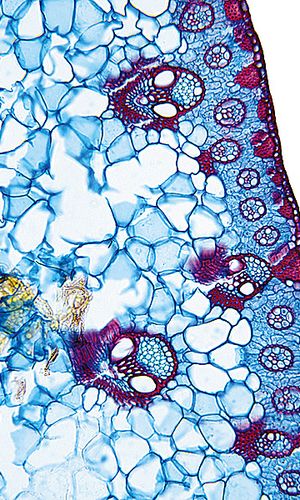Cyperus longus L.
1014410
Species
ISFS : 130000
Checklist : 1014410
ISFS : 130000
Checklist : 1014410
Contains :
Synthesis
Species description (© Flora Helvetica 2018)
70-150 cm hoch, Stängel am Grund beblättert, 3kantig. Blätter 4-10 mm breit. Blütenstand endständig, mit 5-10 ungleich langen Ästen, diese oft nochmals verzweigt, an der Spitze die +/- locker angeordneten, 10-25 mm langen, flachen, 2zeiligen Ährchen tragend. Blütentragblätter rotbraun, gekielt. Blütenstand von 3-6 Hochblättern weit überragt. Narben 3. Frucht scharf 3kantig, rotbraun, ca. 1 mm lang.Flowering period (© Flora Helvetica 2018)
7-9Habitat and distribution inside Switzerland (© Flora Helvetica 2018)
Sumpfwiesen, Ufer / kollin / Südliches TI, vereinzelt M, JN und ANWorld distribution (© Flora Helvetica 2018)
MediterranEcological indicator (© Landolt & al. 2010)
4+w+33-44+1.g.2n=42Status
IUCN status
EndangeredNational Priority
3 - medium national priorityInternational responsibility
1 - weakConservation
Threats
Anatomy
Summary of leaf anatomy (German)
Obere Epidermiszellen grösser als untere. Punktuelle Versteifungselemente am Blattrand und bei der Blattrippe. Verbindungs-Steg zwischen oberer und unterer Epidermis homogen verholzt. Leitbündel im Verbindungs-Steg in der Mitte eingebettet. Leitbündelhülle verholzt.Summary of stem anatomy (German)
Umriss stumpf-dreieckig. Leitbündel diffus verteilt. Konische Stützen. Kleine Interzellularen, oft dreieckig.Description
Culm-diameter 2-5 mm, center full, radius of culm in relation to wall thickness 1:1. Outline circular with a smooth surface. Outline triangular, obtusely. Culm-center full, containing unlignified cells. Epidermis cells inside thin, peripheral thicker-walled (lignified). Large vascular bundles distributed in the whole culm. Small or rudimentary vascular bundles mainly at the periphery. Chlorenchyma present, continuous peripheral belt with unlignified round cells (like a large cortex). Sclerenchyma belt absent. Groups of sclerenchyma conic. Groups of sclerenchyma at the periphery, round. Small sclerenchymatic sheath around vascular bundles with 1-2 cells. Vessels arrangement in vascular bundles in lateral position. Largest vessel in the bundle 20-50 μm. Cavities (intercellulars) between parenchyma-cells small, often triangular.Distribution map
Habitat and distribution inside Switzerland
Südliches TI, vereinzelt M, JN und ANWorld distribution
MediterranEcology
Life form
Geophyte
Habitats
Milieux Phytosuisse (© Prunier et al. 2017)
Habitats © Delarze & al. 2015
 | 2.1.2.2 - Flussufer- und Landröhricht (Phalaridion) |
 | 2.2.1.1 - Grossseggenried (Magnocaricion) |
bold
Dominant species, influencing the appearance of the habitat
 Character species
Character species
 Less strictly linked to a specific habitat
Less strictly linked to a specific habitat
Ecological indicator values by © Landolt & al. (2010)
| Soil factors | Climatic factors | Salinity tolerance | |||
|---|---|---|---|---|---|
| Humidity Value H | 4+w+ | Light Value L | 4 | Salinity Index | -- |
| Reaction Value R | 3 | Temperature factor T | 4+ | ||
| Nutriments value N | 3 | Continentality K | 1 | ||
- Ecological values legend
Humidity Value H 1 very dry 1+ dry 2 moderatly dry 2+ moist 3 medium wet 3+ wet 4 very wet 4+ soggy 5 submerged or underwater f plants living in running water u mostly submerged plants v partly submerged, partly floating plants w humidity moderately variable (± scale of 1-2) w+ highly variable humidity (scale exceeding ± 2) Reaction Value R 1 Very acid (pH 2.5-5.5) 2 acid (pH 3.5-6.5) 3 lightly acid to neutral (pH 4.5-7.5) 4 neutral to basic (pH 5.5-8.5) 5 basic (pH 6-5 -> 8.5 Nutriments value N 1 very low in nutrients 2 low in nutriments 3 medium-poor to medium-rich in nutrients 4 rich in nutriments 5 very rich in nutriments Salinity tolerance 1 halotolerant 3 halophyle Light Value L 1 very shady 2 shady 3 lighted areas 4 luminous 5 highly luminous Temperature factor T 1 alpine to nival stages (from the treeline to the snowline) 1+ suprasubalpine and upper subalpine levels (pine and larch forests) 2 subalpine level (coniferous forests without beeches up to the upper limit of spruces) 2+ lower subalpine and upper mountain stages 3 mountain level (beech and silver fir forests, in the central Alps Scots pine forests) 3+ lower mountain and upper hill levels 4 hill level (mixed deciduous oak forests) 4+ hot places, hill level 5 very hot places, hill level (only in the hottest places, typical of southern Europe) Continentality K 1 Atlantic (high air humidity, very low temperature variations, mild winters) 2 Sub-Atlantic (high air humidity, low temperature variations, relatively mild winters) 3 sub-Atlantic to subcontinental (average air humidity, moderately variable temperature, slightly low winter temperatures) 4 subcontinental (low air humidity, large temperature variations, rather cold winters) 5 continental (very low air humidity, very large temperature variations, cold winters)
Water dependency
| Rivers | 2 - Essential habitat |
| Calm water | 1 - Secondary habitat |
| Ground water | 0 - No link |
Nomenclature
Accepted Name (Checklist 2017)
Cyperus longus L.
Vernacular name
Deutscher Name :
Langästiges ZypergrasNom français :
Souchet longNome italiano :
Zigolo comuneMatch with other reference books
| Relation | Nom | Book | No |
|---|---|---|---|
| = | Cyperus longus L. | Checklist 2017 | 130000 |
| = | Cyperus longus L. | Flora Helvetica 2001 | 2467 |
| = | Cyperus longus L. | Flora Helvetica 2012 | 2643 |
| = | Cyperus longus L. | Flora Helvetica 2018 | 2643 |
| = | Cyperus longus L. | Index synonymique 1996 | 130000 |
| = | Cyperus longus L. | Landolt 1977 | 411 |
| = | Cyperus longus L. | Landolt 1991 | 362 |
| = | Cyperus longus L. | SISF/ISFS 2 | 130000 |
| = | Cyperus longus L. | Welten & Sutter 1982 | 2411 |
= The taxon corresponds to the accepted taxon (Checklist 2017)
< The taxon is included in the accepted taxon (Checklist 2017)
> The taxon includes (among others) also the accepted taxon (Checklist 2017)
< The taxon is included in the accepted taxon (Checklist 2017)
> The taxon includes (among others) also the accepted taxon (Checklist 2017)
Status
Native status
-IUCN list of endangered species (© Walter & Gillett 1997) : No
Status on national Red List 2016
IUCN status:
Endangered

Additional information
IUCN criteria: B2ab(iii)
Status on regional Red List 2019
| Biogregraphic regions | Status | IUCN criteria |
|---|---|---|
| Jura (JU) | NE | |
| Mittelland (MP) | EN | B2ab(iii) |
| Alpennordflanke (NA) | CR(PE) | |
| Alpensüdflanke (SA) | EN | B2ab(iii) |
| Östliche Zentralalpen (EA) | -- | |
| Westliche Zentralalpen (WA) | -- |
- Legend
EX Extinct RE Regionally Extinct CR(PE) Critically Endangered, Probably Extinct CR Critically Endangered EN Endangered VU Vulnerable NT Near Threatened LC Least Concern DD Data Deficient NE Not Evaluated NA Not Applicable
National Priority Species List Status
| National Priority | 3 - medium national priority |
| Need to take action | 2 - |
| International responsibility | 1 - weak |
| Need to monitor populations | 1 - |
Protection status
| International (Bern Convention) | No | |
| GE | total protection | (25.07.2007) |
| NW | total protection | (29.11.2005) |
| Switzerland | -- | |
| VD | total protection | (02.03.2005) |
- Disclaimer
InfoFlora compiles information on protected species as accurately as possible, taking it from the respective cantonal laws. In some cases, however, it was not possible to use the plant names as listed in the original text, but an interpretation of their taxonomy or nomenclature was necessary. The exact meaning of the categories „completely protected“ and „partially protected“ differs among the cantons.
InfoFlora cannot guarantee that the information on the protection status is correct and complete. In case of doubts, we recommend to look up the texts of the respective cantonal law.
Status by sector of activity
| Agriculture-related environmental objectives : | more informations | |
| Forest management environmental objectives : | more informations |
